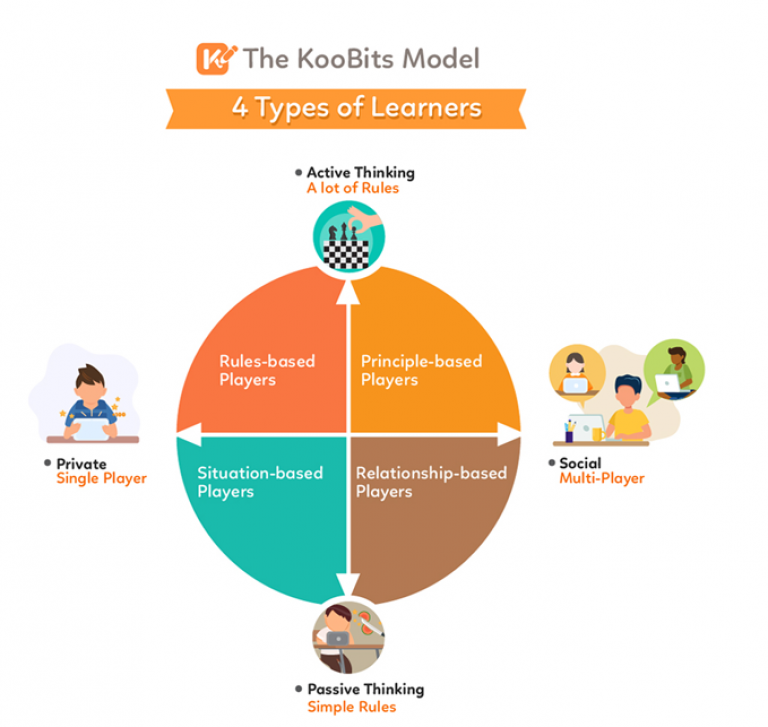If your child has been playing games, it’s natural for you to be concerned with the time spent and the distractions.
However, some games can be good teachers, and they can tell you so much about your child. Things like how to motivate and help them learn faster. (Psst. Rewards might or might not work for your child.)
We’ve identified 4 types of players along 2 axes: 1) Structure and rules, 2) Number of players.

Where does your child belong? Read on to find out. Along the way, you’ll even learn what your child’s favourite game is all about.
Rule-based players (Examples: Chess, Mastermind)
Chess is highly structured and competitive (also really tough). It involves 2 players pitting against each other. Rules are never changing (pawns can never move two squares) and winning gives the player a sense of triumph.
On KooBits, these players love attempting our Daily Challenge to achieve the “Hero of the Day” reward.
There’s a fixed routine (daily), fixed rules (finish ten questions) and a consistent reward (earning a virtual badge). This makes them want to practice Math regularly.
As a parent, you can motivate this child by defining the rules, setting clear boundaries and indicating milestones. Tell them what you expect and what they’ll get for achieving it.
Principal-based players (Examples: Fortnite, Apex of Legends)
Fortnite is a multiplayer game where you compete to be the last player or team standing. The way to win is to play by the rules, work with friends, and be resourceful. Players of Fortnite or similar games enjoy figuring out the “hidden” social dynamics and rules in a complex world.
On KooBits, leaderboards like Champion Class or BFF challenge work well here. To win, players must work with their peers and level up together. The dual challenge of understanding the rules of the leaderboard and managing the social aspect pushes these students.
A student here might do well in leadership positions where they face the challenge of scoring well while leading their peers.
Relationship-based players (Examples: Minecraft, Roblox)
Minecraft is a 3D sandbox game that offers tons of freedom in how you play.
There’s an achievement system but no goals, and it’s never restrictive. The best part is, you get to play with friends. Such players enjoy exploration and opportunities to socialise.
On KooBits, we often find these players in the StoryMath Book Club, where they unlock chapters by completing Math challenges.
In this club, they can see which chapters their friends are reading. They get so excited to practice more and catch up with their friends, so there’s a common topic the next time they meet.
Sounds like your child? Motivate them by emphasising the social element, like the chance to work with their peers or make friends.
Situation-based players (Example: Candy Crush, Temple Run)
At some point, you’d probably played Candy Crush.
What gets you hooked is the dynamic nature of the game and its simple rules. These players enjoy playing alone at their own pace. It’s challenging but not pressurising.
On KooBits, these players are most comfortable on Mission mode — where they tackle Math problems at their own pace and chosen difficulty.
If your child is a situation-based player, you can put them in stimulating environments. Allow them to figure things out independently, and you’ll be surprised to see how well they thrive.
Equipped with this knowledge, you can now jump into KooBits with your child to see if we’ve hit the right spot!
Tags: Lower Primary (7-10), mathematics, Upper Primary (10-12)